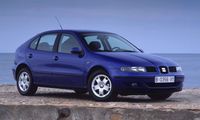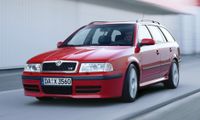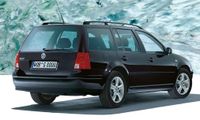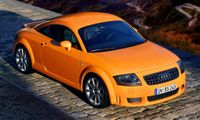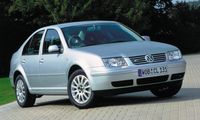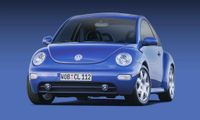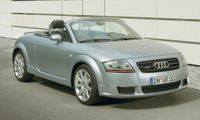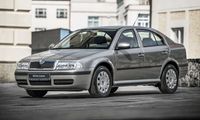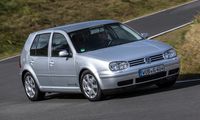The Audi TT 8N is built on the Volkswagen Group Platform-A4 (PQ34). The A4 platform, also known as the PQ34 platform, was a widely used Volkswagen Group platform for compact cars that was introduced in 1996 with the Audi A3 and has led to many models from different brands.
PQ34-platform |
General characteristics of the PQ34 platform
- Compact cars: The platform was used for a wide range of compact, front-wheel drive family cars.
- Modular architecture: It offered a modular design that was later improved in the A platform, making it possible to produce different models with a shared basic structure.
- Wide deployment: The platform was used for a period of about two decades and was applied to models from various brands within the Volkswagen Group, such as Audi, Volkswagen, SEAT and Škoda.
All models and variants
This means that much of the TT's technology is shared with a range of other models within the Volkswagen Group:
- Audi A3 8L; 3- en 5 doors hatchback
- Audi TT 8N; 3-doors Coupé and Roadster
- SEAT León 1M; 5-doors hatchback
- SEAT Toledo 1M; 4-doors saloon
- Škoda Octavia 1U; 5-doors hatchback and estate
- Volkswagen Bora 1J5; saloon and variant
- Volkswagen Golf IV; 3- and 5-doors hatchback and estate
- Volkswagen New Beetle 9C; also as convertible
Depending on the model, a 4-, 5- or 6-cylinder engine is used as the powertrain, with power outputs ranging from 60 hp to 250 hp for the VR6 variant. Below is a visual overview of the variety of models.
Audi A3 8L (3-doors hatchback)
© photo: Audi AG
SEAT León 1M (5-doors hatchback)
© photo: Seat S.A.
Škoda Octavia 1U (5-doors estate)
© photo: Škoda Auto a.s.
VW Golf IV (5-doors estate)
© photo: Volkswagen AG
Audi TT 8N Coupé (3-doors)
© photo: Audi AG
SEAT Toledo 1M (4-doors saloon)
© photo: Seat S.A.
VW Bora 1J5 (4-doors saloon)
© photo: Volkswagen AG
VW New Beetle 9C (3-doors hatchback)
© photo: Volkswagen AG
Audi TT 8N Roadster (convertible)
© photo: Audi AG
Škoda Octavia 1U (5-doors hatchback)
© photo: Škoda Auto a.s.
VW Golf IV (5-doors hatchback)
© photo: Volkswagen AG
VW New Beetle 9C (convertible)
© photo: Volkswagen AG
Technical characteristics & architecture PQ34 platform
- 3-door and 5-door hatchback
- Saloon
- Estate
- Convertible
Aspect | Characteristics |
Engine position | Transverse engine (quer). |
Drivetrain | Usually front-wheel drive; in certain cases, Haldex-based four-wheel drive is possible under the names:
|
Front suspension | McPherson strut system (most commonly used configuration). |
Rear suspension | Depending on variant:
|
Variability | The platform offered space to support different body variants:
|
Dimensions & wheelbase | The wheelbase and track widths varied depending on the model variant, but all were in the compact/small family car segment. |
Weight | Depending on the model and materials used, often in the range of ~1,200 to ~1,400 kg or more, depending on engine and equipment. |
The Volkswagen Group Platform A4 (PQ34) offered Volkswagen advantages, particularly through the cost savings achieved by using shared components and production methods. The platform was flexible enough to support different body variants, from hatchbacks and estate cars to saloons, and provided a consistent basis for parts and technology. This even allowed it to serve as the foundation for more powerful versions with turbo engines, the VR6 and four-wheel drive. At the same time, there were also limitations: because the platform dated from the 1990s, it did not meet modern requirements in terms of rigidity, crash safety and space utilisation. Moreover, it offered less modularity than the later MQB platform (its successor), making it more difficult and less efficient to adapt to new technologies.
The modularity and shared components also had advantages for hobbyists. For example, you occasionally see projects where the interior of the TT is used in one of its siblings. Or the swapping of engines.
© Header photo: Creative Commons

